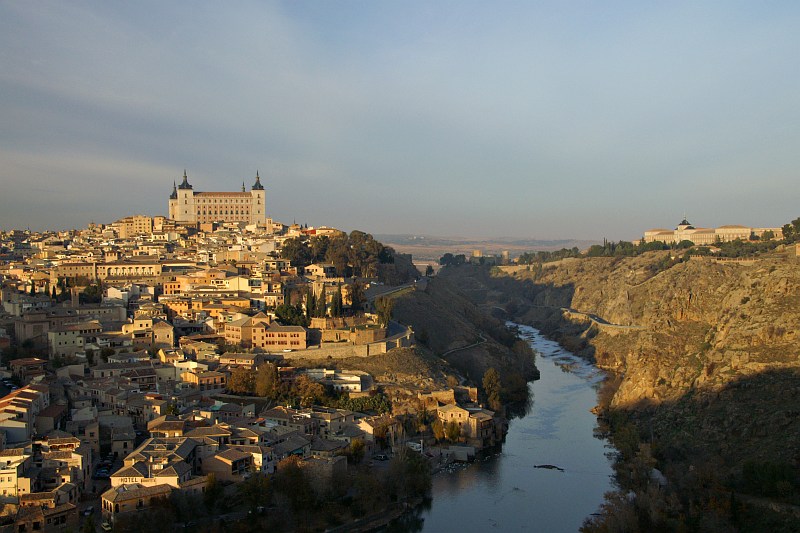
Toledo – a story of translation
What does it take to sustain a “culture of tolerance” in a society marked by genuine differences? It is a question central to the issues discussed on this blog: from Kosovo to Kakheti, from Timisoara to Thessaloniki. Let me share impressions of one particularly interesting effort to answer it: Maria Rosa Menocal’s book The Ornament of the World – How Muslims, Jews and Christians Created a Culture of Tolerance in Medieval Spain.
Menocal is an expert on the multireligious and multilinguistic world of medieval Spain. She decided to write her book after delivering presentations on “Medieval Europe and Authentic Multiculturalism” and noticing that her research had produced a “treasure trove of mostly unknown and unheared stories and characters.” This explains why her book is a very good read. But it is its relevance to current debates that makes it particularly gripping. As the author asks herself:
“Can Muslims be successfully integrated into contemporary and secular European nations? Should fundamentalist Christians have to expose their children to the teachings of reason as well as those of faith, to evolutionary theories as well as scriptural truth? Can Catholic Croatians, Orthodox Serbs, and Muslim Bosnians coexist in the Balkans? How can tolerance and intolerance coexist?”
Menocal describes a medieval society where “Muslims, Christians and Jews did not have separate cultures based on religious differences but rather were part of a broad and expansive culture that had incorporated elements of all their traditions, a culture that all could and did participate in regardless of their religion.”
In fact, despite its title – The Ornament of the World – the story Menocal tells is, in the end, one of defeat as much as triumph. The enemies of tolerance and cultural coexistence are always present and ultimately they triumph. There is the regent of the dying Kalifate of Cordoba, al-Mansur, leading a deadly and destructive raid into Santiago de Compostela in 997; there is the complete destruction, perpetrated by fundamentalist Berber fighters from North Africa, of the palace of Madinat-Al-Zahra outside of Cordoba in 1009, ending the golden age of Cordoba; there are the attacks on Jews by Muslims (the massacre of Jews in Muslim Granada in 1066) and Christians (their expulsion from Christian Toledo in 1391). Later, in 1492, all Jews were made to leave Spain following an order by Spains’ Catholic Kings, many resettling in the Ottoman Empire, in particular in Thessaloniki. Spanish Muslims met the same fate before long.
And yet, it was not religiously defined crusaders but intense exchange and interaction between Christian, Jews and Muslims that defined – and made great – medieval Spain. It was a tradition of exchange, of translation, of trying to reconcile reason and religion, of poetry. To grasp this it is probably easiest to do what Menocal does so well: to introduce some of the leading protagonists.
There is Hasdai ibn Shaprut, the Jewish foreign secretary of the Muslim caliphate called al-Andalus in Arabic and Sefarad in Hebrew. He was born in Cordoba in 915 and became a leader of the Jewish community in Cordoba as well as vizier of caliph Abd al-Rahman. He was proficient in the many languages of his native city – Latin, Arabic, Hebrew and Mozarabic. He remained a devout Jew and was also thoroughly educated in Arab culture. In 949 he headed a delegation in delicate talks with a delegation from Greek speaking Byzantium, to discuss a possible alliance against the Abbasids in Bagdad.
One of the gifts the Byzantines brought was a book by Discorides, On Medecine. Hasdai immediately set out to put together a team of experts to have it translated into Arabic. Books mattered in the Cordoba of his time. The caliphal library had some four hundred thousand volumes “at a time when the largest libraries in Christian Europe probably held no more than four hundred manuscripts. Cordoba’s caliphal library was itself one of seventy libraries in the city.
Books also played a central role in the life of Arab poet Ibm Hazm, raised in a Cordoba harem in the last years of the first millenium, According to Menocal he produced some 400 of them, from law to philosophy, from religious studies to the sciences. His most famous work, though, was a handbook on love – The Neck-Ring of the Dove – whose 30 small chapters cover topics such as “on the Signs Given by the Eyes” and “On Those Who Fall in Love at First Sight.” It is a tribute to a courtly society, laying out the ways in which love can be an all-consuming illness that wastes the lover away, robs him of sleep, appetite, and tranquility – the sum of which creates and incomparable ecstasy and is also the very source of great poetry.” Poetry which appears as modern as this:
“I’ve a sickness doctors can’t cure,
Inexorably pulling me to the well of my destruction.
Consented to be a sacrifice, killed for her love,
Eager, like the drunk gulping wine mixed with poison
Shameless were those nights,
Yet my soul loved them beyond all passion.”
But these sensibilities would travel beyond Southern Spain. Menocal notes how Anadalusian Arabic “ring songs” of love poems made their way into France in the 11th century, together with new instruments that would rehape European music: guitars, drums, tambourines. In the siege of the Northern Spanish town of Barbastro in 1064 “the greatest treasure” taken back by Christian conquerors were Andalusian singers. Medieval French culture owed an obvious and visible debt to the poets of Andalus.
Or take Michael Scot, born in Scotoland, then living in Sicily. He travels to Toledo when that city is at the heart of European culture in the 13th century. One of the main activities in Toledo was the translation of texts into Latin from Arabic. When the Castilian king Alfonso VI took over Toledo from its Arab rulers, Menocal writes, he
“simultaneously aquired an immense wealth of books and, the greatest gift of all, whole communities of multilingual Toledans – Mozarabs and Jews prominent among them, who could serve as translators.”
And as more and more Arab-speaking Christians and Jews fled from increasingly intolerant cities in the South of Spain and settled in Toledo, the city became the European centre of translation:
“It was at this time that the translation of thousands of Arabic volumes into Latin began in earnest, and within fifty years, Latin readers throughout Christendom had at their displosal such once-unimagined wonders as the full body of Aristotle’s works, accompanied by extensive Muslim and Jewish commentaries … Michael Scot and many others went to Toledo to learn Arabic and to train in the special process of collaborative translation developed there. The common model was for a Jew to translate the Arabic text aloud into the shared Romance vernacular, Castilian, whereupon a Christian would take that oral version and write it out in Latin.”
In this way the translators of the Toledo school were not translating individual texts: they were “translating a culture”. They, like the scholars in Cordoba or poets like Ibn Hazm, were the avantguard of the intellectual revival of medieval Europe: its first true renaissance, belying the image of the “dark ages”.
So read this fascinating book! I have thought of its characters many times in recent months, in particular while working on two documentary films – one on Thessaloniki and one on Istanbul (more on these later). In both of these two great European cities one encounters a similar story of traditions of multiethnic, multireligious coexistence lasting for centuries, only to be destroyed in the end by forces of ferocious intolerance, by insistence on purity, by the will to “simplify” society.
As Menocal puts it, the challenge is for a culture to sustain “contradictions.” She never idealises the world she celebrates: there simply are too many accounts of exil, massacres, intolerance and warfare in her story. Her conclusion is that all three monotheistic faiths “have powerful strains of ferocity within them”. Her story concludes with the Spanish inquisition being set up to “cure the perceived ills created by five hundred years of a society that did tolerate contradictions of all sorts.” Thus the medieval world gives way to a new world, embracing the ideal of single-religion and single-language nations: an ideal which in some parts of the world is still with us today.
Menocal herself ends her scholarly meditation in the Balkans, with the Sarajevo Haggadah, a Jewish book of prayers and stories that survived the shelling of the Sarajevo library in August 1992. The book had made it out of Spain in the exodus of 1492, taken to the Ottoman Empire by Sephardic Jews. It was rescued a second time during the second world war, when a Muslim curator in Sarajevo managed to hide it from the Nazis. And many decades later, a woman fleeing Kosovo, attacked by Serb forces in 1999, held among her possessions a paper her father had received from the Israeli government for saving not only the Sarajevo Haggadah but also Yugoslav Jews from the Nazis. Cordoba – Toledo – Thessaloniki – Sarajevo – Istanbul … How many more such chapters will European history write?
One last thought: the multicultural society Menocal describes lasted “for several hundreds of years – that’s a very long time for a good thing to last”. Indeed. But certainly not long enough.
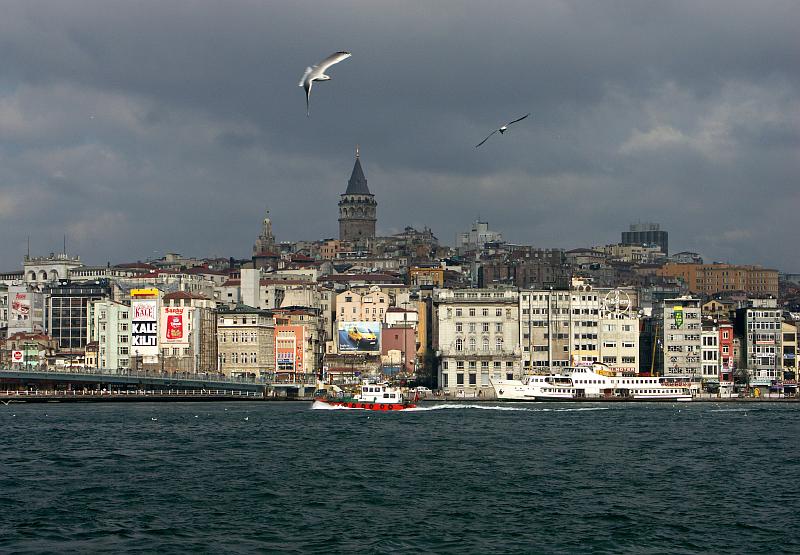
Istanbul’s formerly Christian Pera area
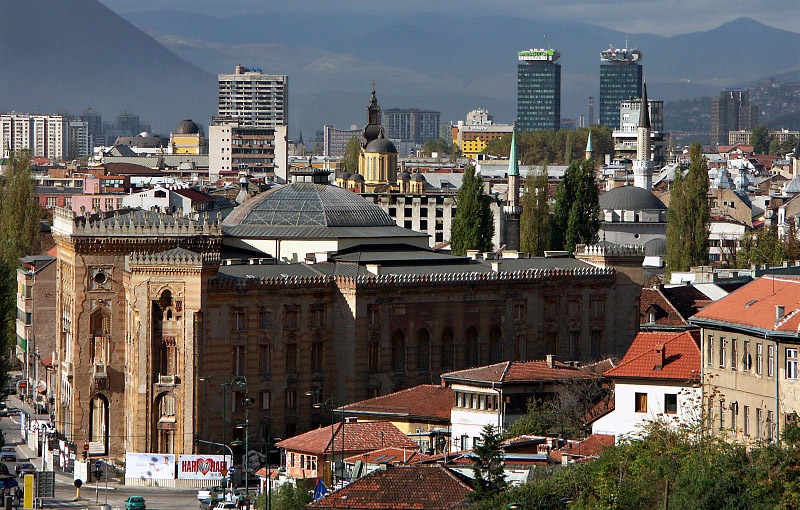
Sarajevo’s National Library, shelled in 1992
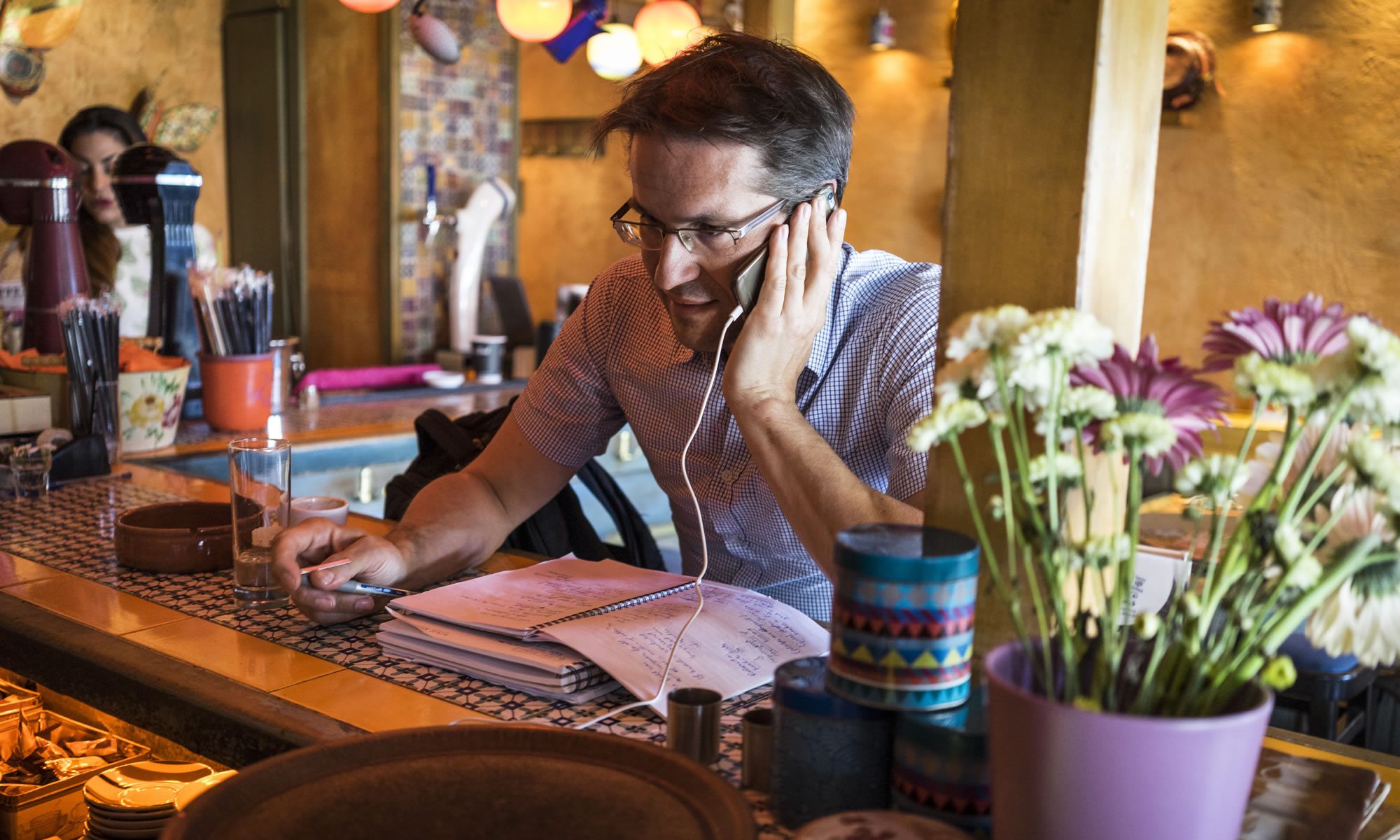
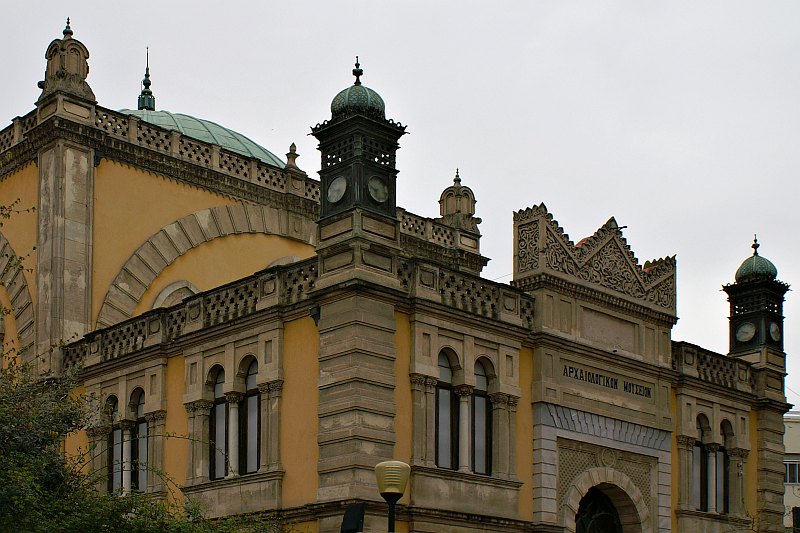
2 Replies to “Translating cultures in Al-Andalus”